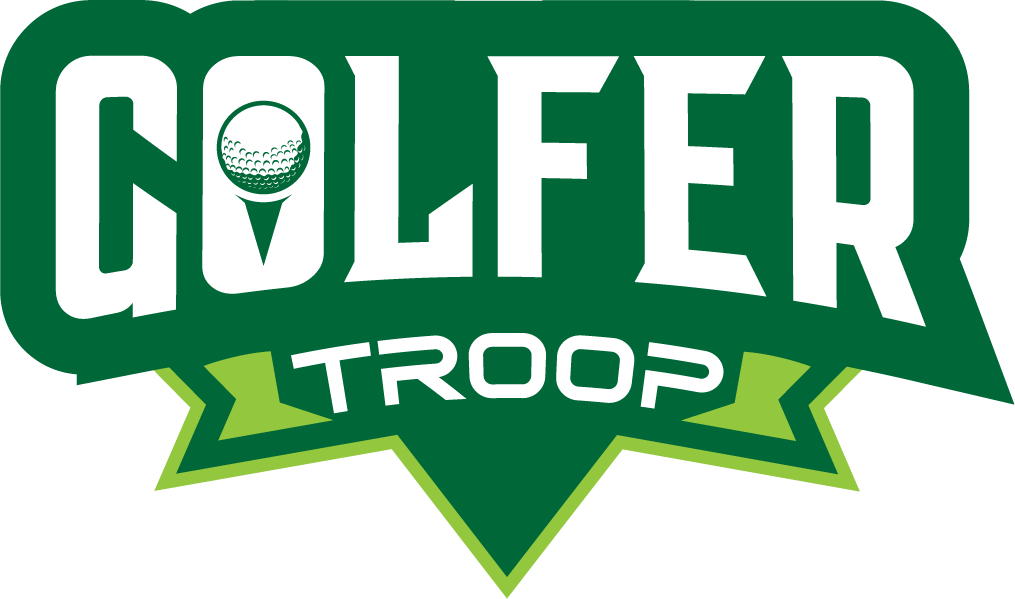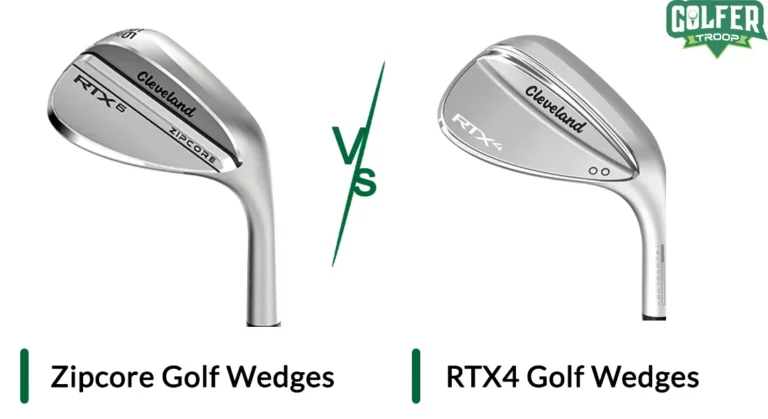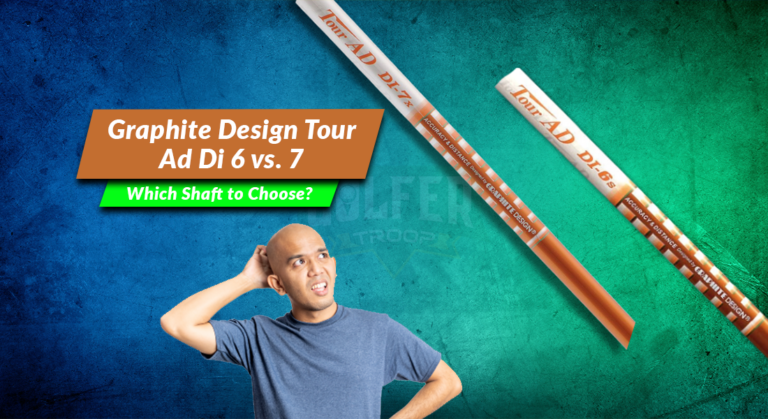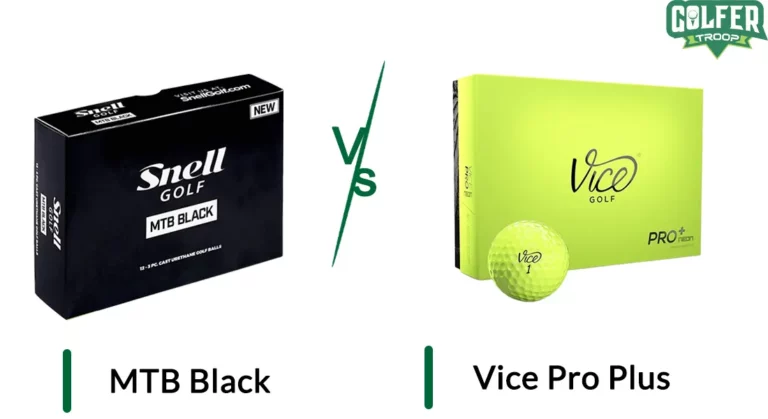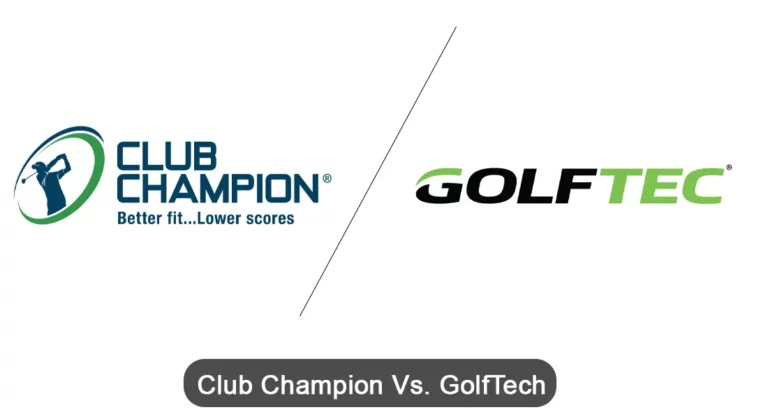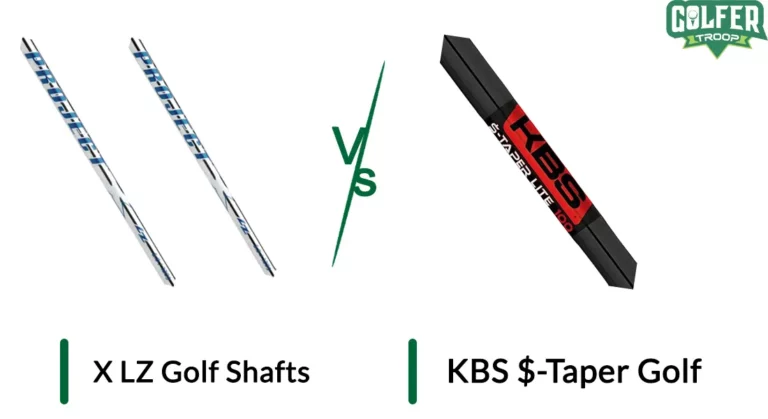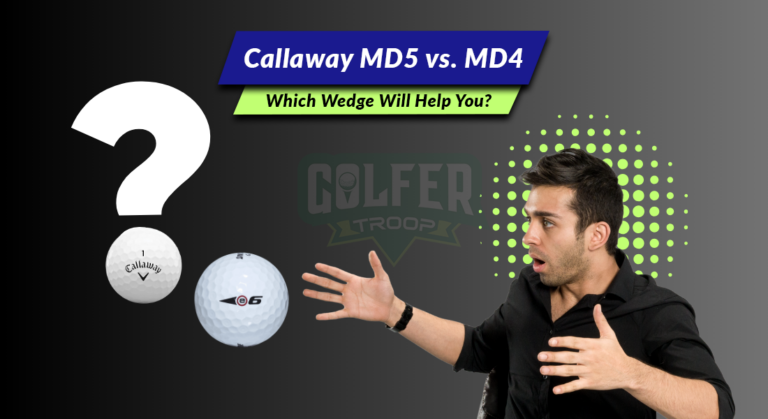7 Worst Golf Balls Ever Made [You May Avoid These Balls]
Some golf balls are terrible, and they perform very poorly in games. No doubt that’s why they are likely to be said to be the worst golf balls ever made.
According to many golfers Kirkland Signature, Callaway Warbird, Top Flite XL Distance, Slazenger Raw Distance, Callaway Chrome Soft, Nike Mojo, and Cut Blue are probably the seven worst golf balls ever made. So many of them reported several issues against these balls.
Let’s discuss their performance and other specs to discover why people call them the worst golf balls.
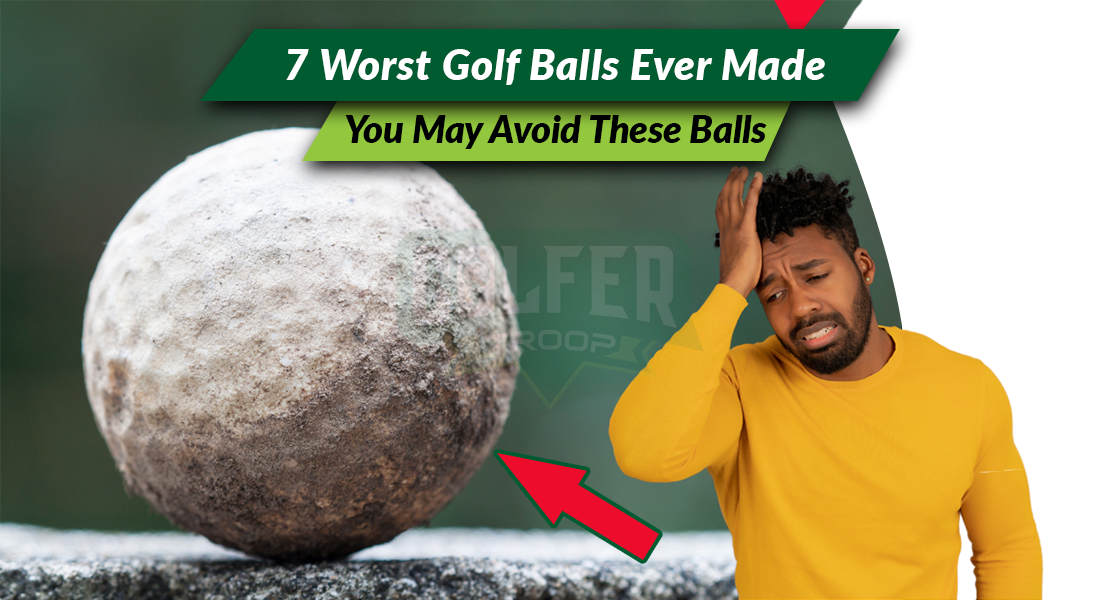
Top 7 Worst Golf Balls to Avoid
Every shot you play in a golf game must be accurate for a better result, and golf balls play a huge role in that.
A ball that doesn’t fly as far as you want, doesn’t spin, doesn’t feel good off the club, and is not durable can be said to be a bad or worse ball.
Here we have listed 7 worst golf balls that you need to avoid in your game:
1. Kirkland Signature
The Kirkland Signature is a four-piece Urethane cover ball that Costco produces. Here are some reasons why it’s a less desirable option for many golfers:
- Fly Distance: This Kirkland signature ball doesn’t fly as far as other good quality golf balls, which you cannot afford in competitive levels. The softer core and cover of the ball make it softer on the club, and it doesn’t get much initial velocity to go further.
- Low spin: Many golfers have complained about the low spin capacity of Kirkland signature golf balls. This low-spin ball can affect the accuracy and control of a shot.
- Low durability: The main complaint about this ball is its “low durability.” Due to the softer outer cover, Kirkland signature balls don’t last for too long. Because of its low durability, they had to refund their Kirkland golf balls.
However, Kirkland’s signature golf ball has a very low rating on the company website from its users.
2. Callaway Warbird
Callaway Warbird can travel further after it is hit and is a cheaper option. But there are some reasons why it is one of the worst golf balls:
- Hard feel with vibration: Many users have felt hardness and vibration while hitting the Callaway Warbird golf balls. Players with slow swing speed may find it very difficult to play with this ball because of the hard feeling.
- No consistency: The flight of this ball is not consistent. With this ball, you cannot perform well on short game shots like chips, pitches, and bunker shots.
- Too much spin: Too much spin from this ball is a great drawback for most players. Controls over approach shots and putts can take a lot of work.
- Low durability: Due to the very thin cover, Callaway warbird balls are not so durable. They can get scuffed or damaged and affect the performance.
3. Top Flite XL Distance
Top Flite XL Distance golf balls are cheap, and they can cover some good distances. But here are some reasons why this is one of the worst balls to avoid:
- Hard feel and harsh sound: Top Flite XL Distance has a very hard outer cover, which leads to a hard stone-like feeling while hitting. Additionally, you can hear a harsh sound at the same time. Players with slower swing speeds may not find it pleasant.
- Poor performance on short-distance shots: This ball doesn’t perform well on short-distance shorts like chips and pitches due to the low compression.
- Less spin: This hard ball doesn’t have that much amount of spin to stop at the right place. So, there’s a lack of control over the shots.
- Low durability: This ball can easily get scuffed or damaged, which can affect its flight and performance.
4. Slazenger Raw Distance
Slazenger Raw Distance is a high-compression two-piece ball with outer and inner parts. However, here are some reasons to avoid this ball:
- Hard feel: This ball has a harder feel than other golf balls. Golfers may feel a vibration while hitting, which can affect their shots.
- Short game performance: The performance of this ball in short games like chips, pitches, and putts are not satisfactory as it cannot provide the desired level of spin.
- Lack of accuracy: While the focus is on maximizing distance, pro golfers often complain about the accuracy of this ball.
- Durability: Slazenger Raw Distance balls can be damaged easily by rough or wet conditions and cause inconsistent performance.
5. Callaway Chrome Soft
Chrome Soft is another worst golf ball from Callaway that you should avoid immediately. It is a softball, but the softness doesn’t work out regarding performance. Here’s why you should avoid this:
- Short distance: Callaway Chrome Soft is so far behind most golf balls in terms of covering distance.
- Low spin: Compared to other premium or average golf balls, this golf ball provides very less spin. It can affect the accuracy of your shot.
- Price: Like other premium golf balls, Chrome Soft is a high-priced golf ball. But, according to its high price, the performance could be better.
6. Nike Mojo
The Nike Mojo golf ball is suitable for amature golfers, not skilled or advanced golfers. However, this golf ball is discontinued; and is still one of the worst to avoid. Here’s why:
- Lack of performance: Mojo balls are not consistent, and they are not good at aimed shots, shots that require spin, and don’t cover much distance.
- Less control: Nike Mojo balls are tough to control and stop after impact. Players with slow swing speeds couldn’t handle the ball around the greens.
- Poor durability: These balls have a thin cover prone to scuffing and damage. They lose their effectiveness after a few shots.
7. Cut Blue
Cut Blue golf balls are good for flight and distance, but it’s on our list of worst golf balls for some serious reasons. Here they are:
- Durability: Durability is the major issue with these balls, as many players have reported quick damage even after only one shot with the wedge. The cover of the Cut Blue ball is made of a soft urethane material that is less durable. Due to this material, the ball gets scuffed or peeled off when shot with a wedge or other short iron. It affects the performance of the ball greatly.
- Feel: This ball is quite firm for some golfers, which may lead to a low feeling and loss of control on shots around the green.
How Do You Know Which Golf Ball To Use?
Choosing the right golf ball can be tricky, depending on several factors. Let’s narrow down some facts:
Choose ball compression according to your swing speed
If you have a slow swing speed, a ball with 80 or less compression suits you. Similarly, you will need a ball with 90 or 100 compressions for medium and higher swing speeds. It’s important for your accuracy and distance.
Skill level
As a beginner, you will need a softer, low-compression ball with more forgiveness and distance. On the other hand, you will need higher-compression balls with more spin, greater control, and higher compression.
Durability of the ball
You must ensure the ball you choose or use is durable and they don’t get scuffed or break quickly.
Feel
Know your preference between a softer or firmer feel, and choose the golf ball according to that.
Problems May Arise When Playing With Worst Golf Ball
Here are some problems that may arise when you play with the worst golf ball:
- The cheaper material of the worst golf balls won’t provide much spring, which can lead to a reduced distance off the tee and on approach shots.
- Worst balls cannot provide accuracy on long shots.
- These balls cannot provide enough spin on chip or approach shots.
- A bad or worst ball will get damaged very soon, and you will need more balls than usual.
Read More:
6 Best Golf Simulator Orlando, Florida | Practice & Play Golf
7 Indoor Golf Simulator Los Angeles, CA | Practice and Play golf
Best Indoor Golf Phoenix, AZ | 6 Places To Practice & Play Golf
7 Indoor Golf Simulator Indianapolis, IN | Practice Golf Anytime
FAQs
We understand that you might have some other queries regarding golf balls. Let’s find the answers in the following FAQ section:
How do you tell if a golf ball is hard or soft?
You can determine it from the compression scale of the golf balls. A higher number in the scale indicates a hard ball and a lower number indicates a softer ball.
Can you pick up your golf ball to identify it?
Yes, you may pick your ball from the rough if you cannot identify it. But, before that, you must mark the spot, and you cannot clean it more than necessary.
What do the numbers on golf balls mean?
The single-digit numbers on golf balls are there to identify them. The color and double-digit numbers indicate their compression and other features, and the triple-digit indicates the number of dimples on the ball.
Final Thought
A worst or low-performing golf ball can affect your gameplay and let you play more shots, keeping you behind. That’s why it’s necessary to identify and avoid them to improve your score sheet.
So, consider our list of 7 worst golf balls, and avoid them even in your practice sessions unless you want to degrade your skill.
Reference: https://www.youtube.com/watch?v=80TN9nccTmM&ab_channel=JamesRobinsonGolf
Meet Jalal, a passionate golf writer and the driving force behind Golfertroop.com, your go-to destination for all things golfing! Whether you’re a seasoned golfing veteran or a beginner taking your first swing, Jalal is here to assist you in making the most out of your golfing experience.
